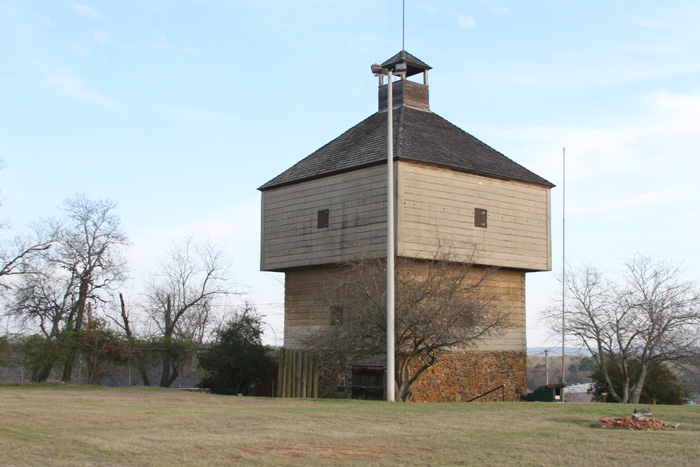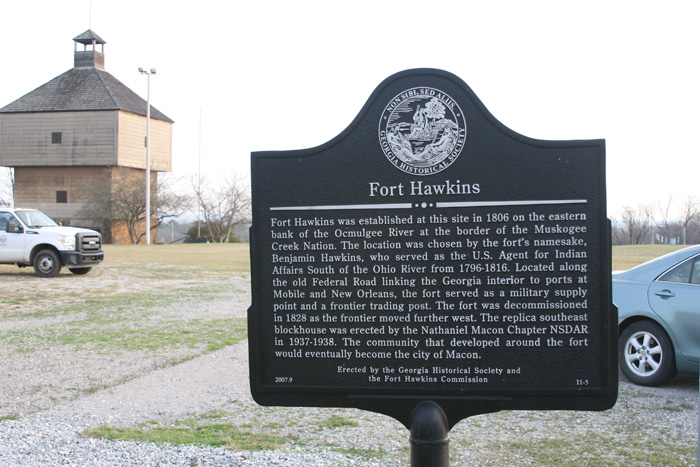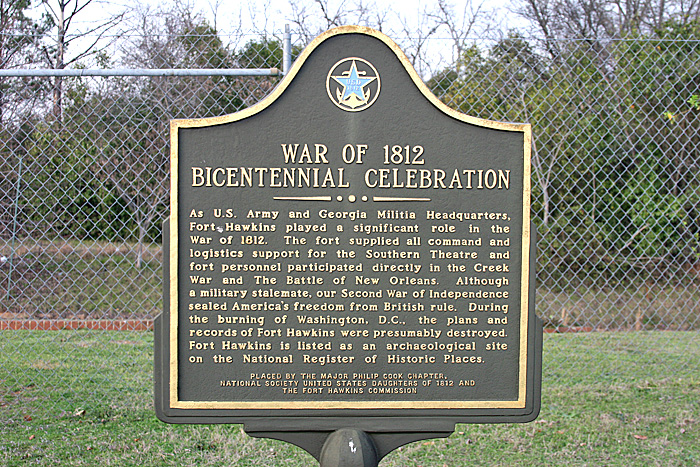last page update: Jan. 27, 2020
Ron.V
|
Ft. Hawkins was built along the old Federal Road that, according to author Leon Southerland 1,
followed old Indian trading paths "from Milledgeville [GA] to Mobile
[AL]." Benjamin Hawkins was a delegate to the Continental
Congress and later the first U.S. senator from North Carolina.
His friend, President George Washington, appointed Hawkins as
Superintendant of Indian Affairs. He served until his death in
1816. The fort built on the fall line of the Ocmulgee River was
named after him. 2
John Vincent enlisted on Oct. 4, 1813 in General Joseph Graham's North and South Carolina Brigade. According to Wikipedia, "The militia marched to the start of the Federal Road in Augusta, Georgia, walking to Fort Benjamin Hawkins (in modern Macon, Georgia)." 3 My wife Linda and I visited the site of Ft. Hawkins a few years ago and took some pictures. Plans for the original fort were destroyed when the British burned the nation's capital during the War of 1812 but archaeologists have found where the corner of the fort was located. Based on an early drawing a replica of the corner of the fort was built on the original site. Here's a picture we took (click for a larger photo)  The historic marker below tells a bit about the fort and when it was built (click the photo for a larger picture)  This last marker explains the significance of the fort during the War of 1812 (click for larger photo)  After a thorough search of records in Macon, Georgia's "Washington" library, we never found any records that mentioned John Vincent or the militia which he joined. However, we know from established troup movements that John passed through Ft. Hawkins as part of General Joseph Graham's militia. Valuable papers from the War of 1812 were destroyed in a house fire in 1894. For further reading, you may wish to download this large, 399 page printable file (nearly 7MB). It gives details of General Joseph Graham's service from the American Revolution through the War of 1812 (which begins on page 144). The 1904 publication was edited and produced by his grandson, Maj. William A. Graham of the North Carolina Senate, who later served as the state's Commisioner of Agriculture from 1908 until his death in 1923. 4 On page 152 there's a transcript of a letter from General Graham to the governor of N.C. In it, he says, "It will be a week to 10 days before I can start for Ft. Hawkins." The letter is dated 27 Feb. 1814. John Vincent was discharged along with the rest of the general's troups in April following Andrew Jackson's decisive battle at Horseshoe Bend. Although Ft. Hawkins was only a stopping point along the trail that John Vincent took along with General Graham's other soldiers, I believe the trip was a significant one for many of these men. Not long after they returned to their homes, immagrants by the thousands began entering the "old southwest" (Alabama, Mississippi, Louisiana). The great migration had begun! 1- Henry deLeon Southerland, Jr. and Jerry Elijah Brown, The Federal Road: through Georgia, the Creek Nation, and Alabama, 1806-1836 (The University of Alabama Press, Tuscaloosa and London, 1989), 14. 2- See Wikipedia: https://en.wikipedia.org/wiki/Benjamin_Hawkins 3- See Wikipedia: https://en.wikipedia.org/wiki/Creek_War#North_Carolina_and_South_Carolina_militia 4- See Wikipedia: https://en.wikipedia.org/wiki/William_A._Graham_(agriculture_commissioner) See also: https://www.ncpedia.org/biography/graham-william-alexande-0 |
Ron.V